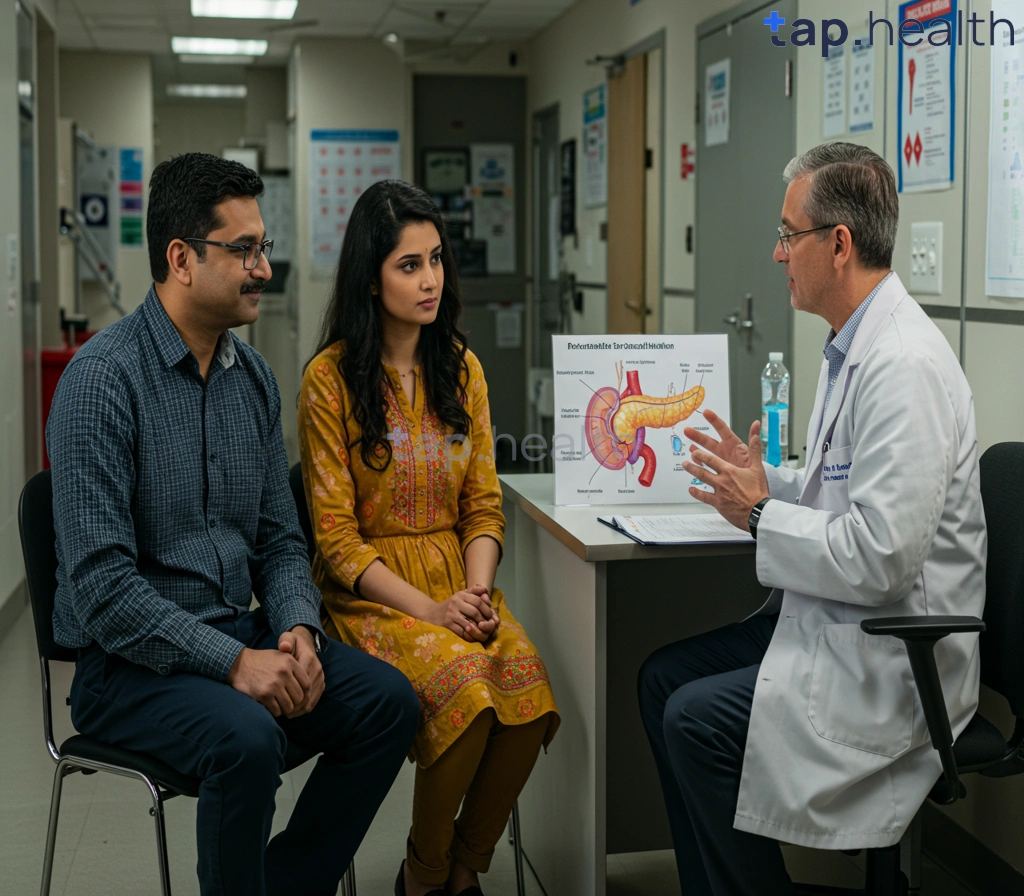Table of Contents
- Caloric Restriction: Impact on Glucagon & Liver Metabolism in Type 2 Diabetes
- Understanding Glucagon’s Role in Hepatic Metabolism with Type 2 Diabetes
- How Caloric Restriction Modifies Hepatic Metabolism in Type 2 Diabetes Patients?
- Optimizing Hepatic Metabolism Through Caloric Restriction for Type 2 Diabetes Management
- Caloric Restriction, Glucagon, and the Liver: A Guide to Type 2 Diabetes Treatment
- Frequently Asked Questions
- References
Living with Type 2 Diabetes often feels like navigating a complex maze of dietary restrictions and medication. But what if there was a more nuanced understanding of how our bodies process energy that could lead to better management? This blog post delves into the fascinating interplay of Caloric Restriction, Glucagon, and Hepatic Metabolism in Type 2 Diabetes. We’ll explore how these three elements interact, uncovering potential pathways for improved glucose control and overall health. Understanding these processes can empower you to make informed decisions about your diabetes management and potentially improve your quality of life. Let’s unlock the secrets of your body’s metabolic processes together!
Caloric Restriction: Impact on Glucagon & Liver Metabolism in Type 2 Diabetes
Understanding the Liver’s Role in Type 2 Diabetes
Type 2 diabetes, a significant health concern in India and other tropical countries, is often characterized by impaired glucose metabolism. The liver plays a crucial role in this process, and its function is heavily influenced by glucagon, a hormone that raises blood sugar levels. Caloric restriction, a cornerstone of lifestyle changes for managing diabetes, significantly impacts both glucagon secretion and hepatic (liver) metabolism. Up to 80% of Type 2 diabetes cases can be delayed or prevented through lifestyle modifications, as highlighted by research emphasizing lifestyle changes.
Caloric Restriction’s Effects
When caloric intake is reduced, the body’s demand for glucose decreases. This leads to a reduction in glucagon secretion, resulting in improved glucose control. Simultaneously, caloric restriction improves insulin sensitivity, allowing the liver to process glucose more efficiently. This, in turn, reduces the production of glucose by the liver, further contributing to better blood sugar management. Effective caloric restriction involves a balanced diet rich in fruits, vegetables, and whole grains, common and accessible staples across many Indian and tropical regions. However, it’s important to note that for some individuals, particularly those already underweight, gaining weight with type 2 diabetes might require a different approach.
Practical Steps for Indian & Tropical Populations
Adopting a culturally appropriate, calorie-controlled diet is key. This might involve incorporating traditional, locally sourced, low-glycemic index foods into meal plans. Regular physical activity, crucial for overall health, also complements caloric restriction in improving liver function and blood sugar control. Consulting a healthcare professional or registered dietitian for personalized advice is highly recommended, particularly given the wide variety of dietary habits and health conditions present in the diverse populations of India and other tropical nations. Taking proactive steps toward managing your weight and diet can significantly impact your risk of developing Type 2 diabetes. The choice between a low-carb or moderate-carb diet can also significantly influence results, and should be discussed with your doctor.
Understanding Glucagon’s Role in Hepatic Metabolism with Type 2 Diabetes
The Interplay of Glucagon and Insulin Resistance
Type 2 diabetes, prevalent in India and across tropical countries, is significantly characterized by insulin resistance. Over 80% of Type 2 diabetics experience this, impacting how the body processes glucose. This resistance leads to elevated blood sugar levels, where the pancreas struggles to produce sufficient insulin to counteract the high glucose. In this context, understanding glucagon’s role becomes crucial. Glucagon, a hormone produced by the pancreas, primarily acts to increase glucose levels in the blood, counteracting the effects of insulin. In individuals with insulin resistance, this counter-regulatory action can exacerbate hyperglycemia.
Glucagon’s Impact on Hepatic Metabolism
The liver (hepatic) plays a central role in glucose metabolism. When blood sugar is low, glucagon stimulates the liver to release stored glucose (glycogenolysis) and produce new glucose (gluconeogenesis). However, in the context of type 2 diabetes and insulin resistance, this process becomes dysregulated. The excessive glucagon activity, coupled with impaired insulin signaling, leads to overproduction of glucose by the liver, further contributing to high blood sugar. This is especially concerning in populations prone to metabolic syndromes often seen in tropical climates. Understanding the differences between Type 1 and Type 2 diabetes is also important; for example, How Does Type 1 Diabetes Affect Homeostasis? Key Insights can provide valuable context.
Managing Glucagon’s Influence
Effective management of type 2 diabetes necessitates a holistic approach that considers the complex interplay between insulin resistance and glucagon. Dietary strategies focusing on managing carbohydrate intake are essential, alongside regular exercise to improve insulin sensitivity. In many Indian and tropical regions, traditional diets rich in fiber and low glycemic index foods can play a vital role in mitigating the negative effects of elevated glucagon. Consulting a healthcare professional is crucial for personalized guidance on managing blood sugar levels and mitigating the effects of glucagon in hepatic metabolism, particularly tailored to your region’s dietary patterns and lifestyle. It’s also helpful to understand what conditions are less commonly associated with Type 2 Diabetes; for further information, see Which Condition is Not Usually Associated with Type 2 Diabetes?.
How Caloric Restriction Modifies Hepatic Metabolism in Type 2 Diabetes Patients?
Type 2 diabetes, representing a staggering 90% of all diabetes cases in India and prevalent across many tropical countries, significantly impacts hepatic metabolism. Understanding how caloric restriction modifies this is crucial for effective management. Research consistently shows that reducing caloric intake influences glucose homeostasis and insulin sensitivity, key factors in managing type 2 diabetes.
Impact of Caloric Restriction on Glucagon and Liver Function
Caloric restriction affects glucagon secretion, a hormone that plays a vital role in regulating blood glucose levels. In individuals with type 2 diabetes, often experiencing insulin resistance, this hormonal balance is disrupted. By reducing caloric intake, we can potentially improve insulin sensitivity and modulate glucagon levels, leading to better control of hepatic glucose production. This translates to improved liver function and reduced risk of complications associated with hyperglycemia, a common feature of type 2 diabetes in India and other regions with high prevalence.
Practical Implications for Indian and Tropical Populations
Considering the high prevalence of type 2 diabetes in India and similar regions, tailored dietary interventions are essential. Caloric restriction, when implemented carefully under medical supervision, can be a powerful tool. This may involve adopting traditional dietary patterns emphasizing whole grains, legumes, and fresh produce, alongside a reduction in refined carbohydrates and saturated fats. Remember, consulting a healthcare professional before making significant dietary changes is crucial. They can help develop a personalized plan that considers individual needs and cultural contexts. This approach not only helps manage blood sugar but also addresses the broader health challenges faced by these populations. For further understanding of diabetes, you might find our article on Can Type 3 Diabetes Be Reversed? helpful. While this article focuses on type 2 diabetes, understanding the complexities of different diabetes types can provide a more holistic perspective on managing blood sugar. The impact of other conditions on diabetes is also crucial, such as the potential link between liver disease and diabetes explored in our article: Can Hepatitis C Cause Diabetes?
Optimizing Hepatic Metabolism Through Caloric Restriction for Type 2 Diabetes Management
Caloric restriction plays a crucial role in managing type 2 diabetes, particularly in improving hepatic metabolism. For individuals in India and tropical countries, where dietary habits often contribute to the disease, understanding this connection is vital. Studies show that even moderate caloric restriction can significantly impact blood sugar control and reduce the burden on the liver. This is especially relevant considering that smokers with diabetes in these regions face a doubled mortality risk from cardiovascular complications. Managing cholesterol is also crucial, as highlighted in our article on How to Manage Cholesterol Levels with Diabetes?.
The Role of Glucagon in Hepatic Metabolism
Glucagon, a hormone produced by the pancreas, plays a counter-regulatory role to insulin. In type 2 diabetes, insulin resistance leads to elevated blood glucose and increased glucagon secretion. This heightened glucagon can stimulate hepatic glucose production, exacerbating hyperglycemia. Caloric restriction helps to modulate glucagon secretion, thereby improving the liver’s ability to process glucose effectively. This can lead to better glycemic control and reduced long-term complications.
Practical Strategies for Caloric Restriction
Implementing caloric restriction doesn’t necessitate drastic measures. Small, sustainable changes like portion control, incorporating more fiber-rich foods common in Indian and tropical diets (like legumes and vegetables), and reducing refined carbohydrates can yield significant benefits. Consulting a healthcare professional or registered dietitian familiar with regional dietary practices is crucial to develop a personalized plan. This ensures that the caloric restriction strategy aligns with your individual needs and cultural food preferences, maximizing its effectiveness and minimizing any potential risks. Remember that a holistic approach combining caloric restriction with regular exercise and medication (if prescribed) is key to long-term diabetes management. For more simple lifestyle changes, check out our guide on 5 Easy Lifestyle Changes to Manage Type 2 Diabetes.
Caloric Restriction, Glucagon, and the Liver: A Guide to Type 2 Diabetes Treatment
Managing type 2 diabetes effectively in Indian and tropical countries often requires a nuanced approach. Understanding the interplay between caloric restriction, glucagon, and hepatic metabolism is crucial. Caloric restriction, particularly focusing on carbohydrate intake, can significantly impact blood sugar levels. Research suggests that limiting carbohydrate intake to 45–60 grams per meal, depending on individual needs, is a common recommendation. This is especially important considering the high carbohydrate content in many traditional diets in these regions.
The Role of Glucagon
Glucagon, a hormone produced by the pancreas, plays a counter-regulatory role to insulin. When blood sugar drops too low, glucagon signals the liver to release stored glucose, preventing hypoglycemia. However, in individuals with type 2 diabetes, this system can be dysregulated, leading to blood sugar fluctuations. Effective management requires strategies to balance insulin and glucagon activity. Careful carbohydrate control, through portioning and mindful food choices, is key to achieving this balance.
Hepatic Metabolism and Dietary Considerations
The liver plays a central role in glucose metabolism. Dietary choices directly influence hepatic glucose production and storage. In tropical climates, access to fresh fruits and vegetables can be challenging, emphasizing the need for careful meal planning and potentially incorporating supplements rich in fiber and antioxidants. Choosing complex carbohydrates over refined sugars is important to optimize blood sugar levels. Individuals should consult a healthcare professional or registered dietitian to create a personalized plan that considers both dietary habits and regional availability of food. The impact of these dietary choices can be further understood by reading more about The Link Between Diabetes and Fatty Liver.
Actionable Steps for Effective Management
To improve diabetic health in Indian and tropical countries, consider consulting a doctor to determine your individual carbohydrate needs. Focus on incorporating lean proteins, healthy fats, and non-starchy vegetables into your diet. Prioritize regular exercise and stress management techniques. Remember, a personalized approach that considers regional dietary habits and lifestyle factors is essential for successful diabetes management. As you age, managing diabetes presents unique challenges; for more information, see our guide on Managing Diabetes as You Age: Challenges and Solutions.
Frequently Asked Questions
Q1. What is the role of caloric restriction in managing type 2 diabetes?
Caloric restriction helps reduce glucagon secretion, a hormone that increases blood sugar. This improves insulin sensitivity and reduces the liver’s production of glucose, leading to better blood sugar control.
Q2. What kind of diet is recommended for effective caloric restriction in type 2 diabetes?
A balanced diet rich in fruits, vegetables, and whole grains is recommended. It’s also important to manage carbohydrate intake and choose low-glycemic index foods.
Q3. How important is exercise in managing type 2 diabetes through caloric restriction?
Regular physical activity is a crucial complement to dietary changes. It further enhances insulin sensitivity and contributes to overall health improvements.
Q4. Is caloric restriction suitable for everyone with type 2 diabetes?
Individual needs vary greatly. It’s essential to get personalized advice from a healthcare professional who can consider your specific dietary habits and overall health condition before starting any dietary changes.
Q5. What are the potential risks or challenges of caloric restriction for type 2 diabetes?
While beneficial, caloric restriction should be implemented carefully under professional guidance to avoid nutritional deficiencies or other health complications. It is not a one-size-fits-all approach.
References
- A Practical Guide to Integrated Type 2 Diabetes Care: https://www.hse.ie/eng/services/list/2/primarycare/east-coast-diabetes-service/management-of-type-2-diabetes/diabetes-and-pregnancy/icgp-guide-to-integrated-type-2.pdf
- Understanding Type 2 Diabetes: https://professional.diabetes.org/sites/default/files/media/ada-factsheet-understandingdiabetes.pdf





